First past the post: What is it? What are the results in Canada?
First past the post is the winner-take-all voting system used for federal and provincial elections in Canada.
Federally, Canada is divided into 338 ridings – 338 geographical areas that each elect one Member of Parliament.
While we talk about a “federal election”, what we really have are 338 separate riding elections, each run using first past the post.
Let’s see what this looks like locally. Then we’ll examine the effect of first past the post on the overall national results and governance.
In the picture below, we have the results from what we’ll call “Example Riding”.
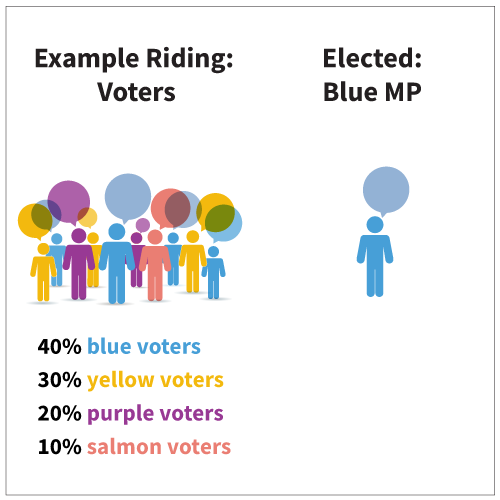
In each riding the voters who choose the most popular candidate elect an MP. In this case, the candidate of the Blue Party.
Other voters do not elect any representation. Their votes made no difference.
Now let’s pretend our Example Riding is within a city, which we’ll call CityVille.
In this city, there are four ridings, each of which elects one MP.
In this simplified version below, let’s look at how the same results in our Example Riding might look beside the results from the other three ridings in the same city.
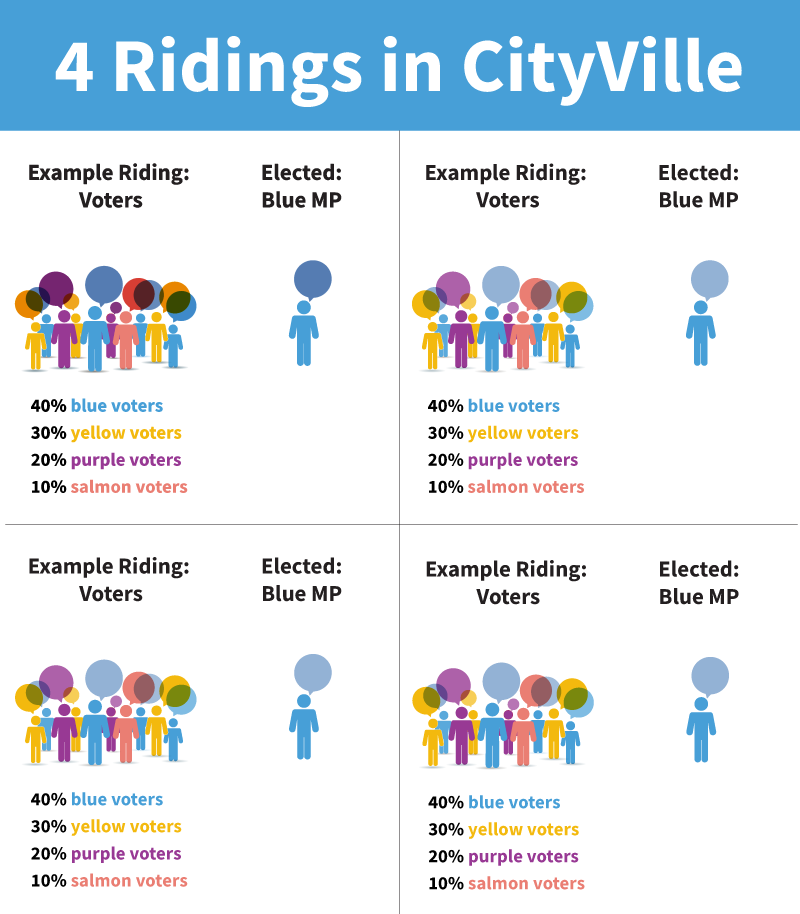
You can see that in each riding, Blue Party voters formed the largest group.
In each riding, the Blue Party voters elected an MP. Therefore the entire city is represented by MPs from the Blue Party.
However, a substantial number of voters in each riding – and the city overall – wanted a representative from the Purple Party, Yellow Party or Salmon Party to represent their views.
The blue party won all 4 seats in the city, despite the fact that 60% of voters (the majority) did not support that party.
Who represents the values and policy preferences of voters who didn’t vote for the Blue Party?
Example: The 2019 Federal Election
Let’s look at an example in of this problem from Canada’s 2019 federal election.
There are 40 riding seats in the Greater Toronto area (GTA), Halton, and Peel.
In the 2019 election, about 56% of voters in the GTA, Halton and Peel chose the Liberals to represent them.
However, because each riding is a one-winner-takes-all vote (first past the post), and the Liberal candidate won the plurality in every single riding, the results do not represent the political diversity of views at all.
With winner-take-all voting, every other point of view was shut out.
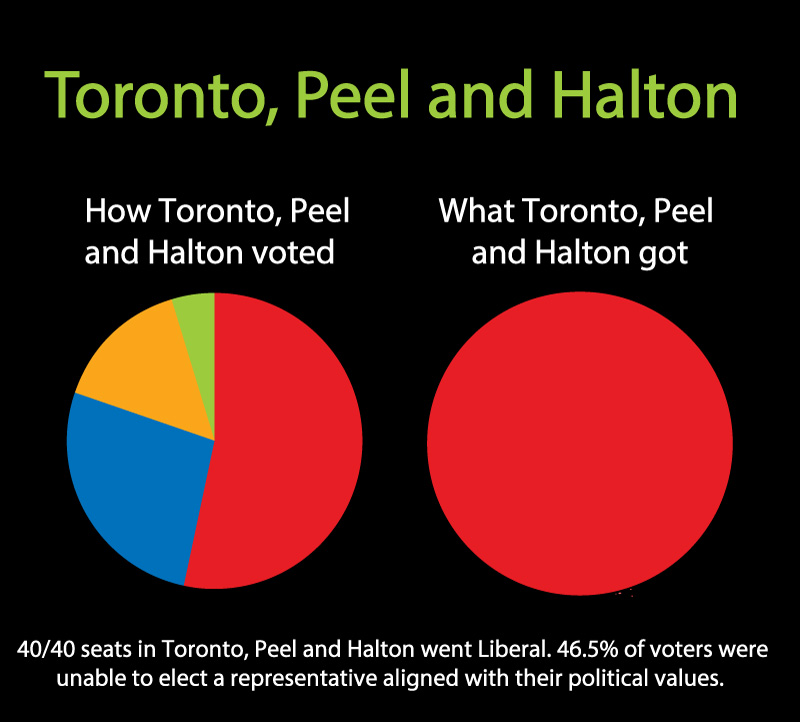
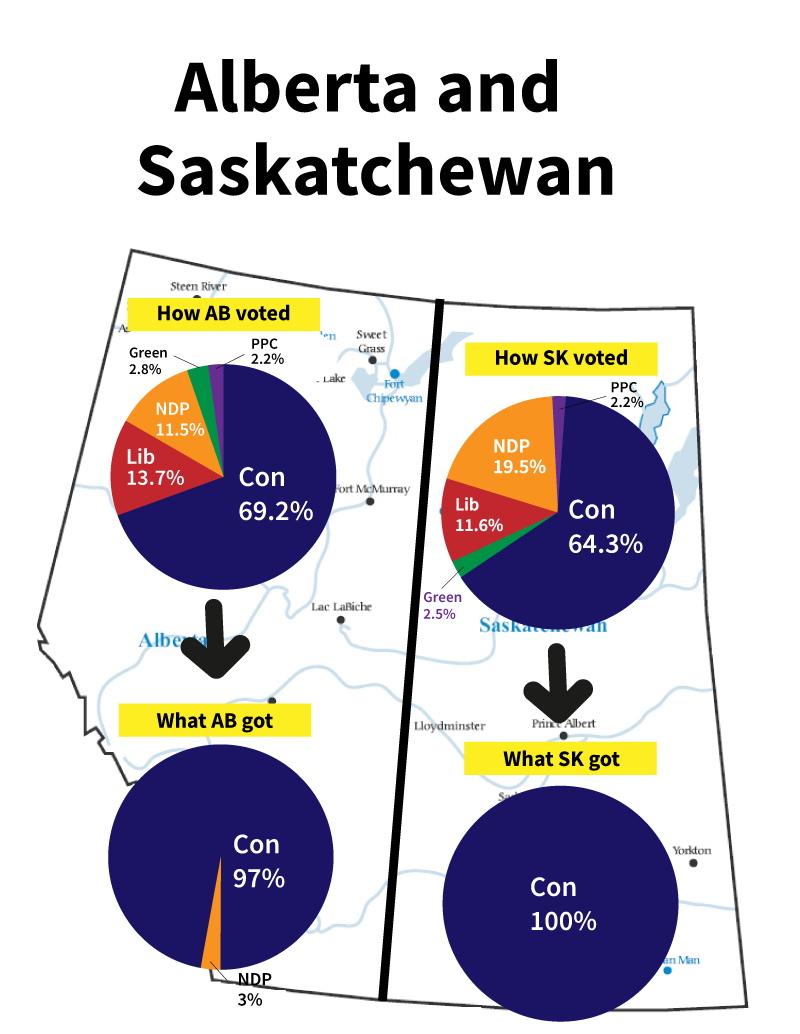
Despite political diversity in Alberta and Saskatchewan, voters of parties other than the Conservatives received almost no representation.
Only one non-Conservative MP was elected – despite 30-35% of voters choosing other parties.
The distorted results of the 2019 federal election in Alberta and Saskatchewan had the unfortunate consequence of meaning that no MPs of the Liberal Party were elected from either province, so voters in those provinces had no representation at the Cabinet table. This lack of representation is fueling divisiveness and “western alienation.”
Province by province across the country, if we look at the popular vote versus seats won, the image below shows the contrast.
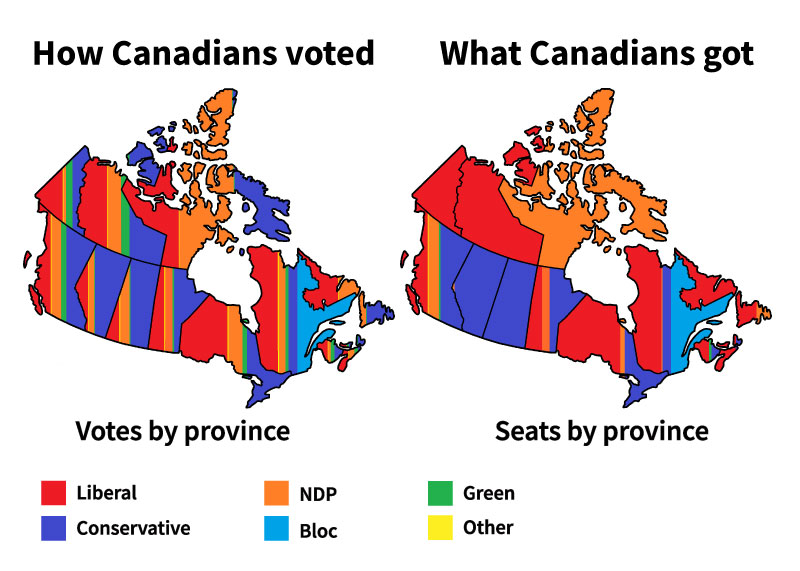
Overall, here is how Canadians voted in 2019, and what Canadians got:
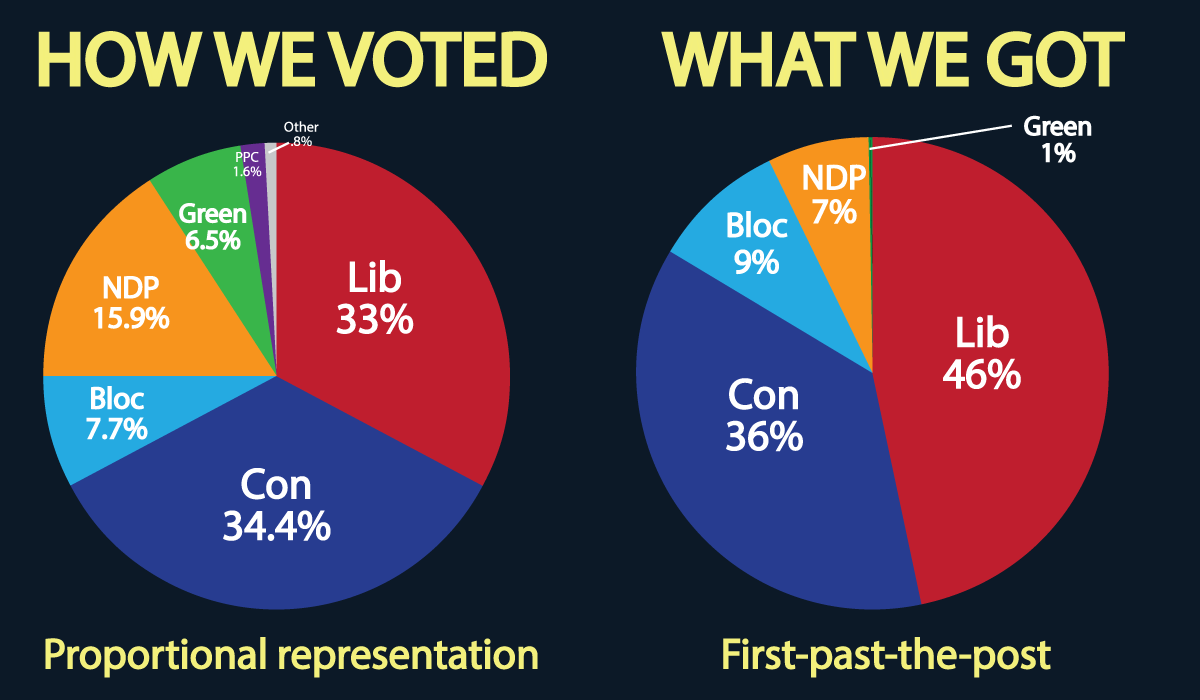
First past the post = “majority” governments with less than half the vote
Although Canada currently has a minority government, quite often in Canada, a single party forms a “majority” government with far less than 50% of the vote. These are “false majority” governments.
In 2015, the Liberal Party formed a majority government with 39.5% popular support.
In 2011, the Conservative Party formed a majority government with 39.6% popular support.
A majority government means the governing party has 100% of the power.
After almost every election, the majority of voters in Canada have NO SAY in government decision making.
When one party has 100% of the power, it often appears that the government is run by one leader and some backroom party strategists.
Polling over decades shows that most Canadians think that a majority government elected by less than 50% of voters is not fair or representative.
False majorities are just the start of the problems with first past the post.
Extremely distorted results
The basic problem with first-past-the-post is that the overall results have little relationship to the popular vote.
First past the post is a winner-take-all system, which is not designed to create a Parliament that reflects how people voted.
Voters for some parties get a lot more representation than their popular support warranted.
Voters for other parties get very little representation compared to the popular support for their party.
For example, in the 2019 federal election, 1.8 million people voted for the Green party. The system rewarded them with 3 Green Party seats.
2.1 million people voted for the Bloc Quebecois – only slightly more support than the Green Party received. The first past the post system rewarded Bloc voters with 32 seats.
These results have an effect on whose voices are heard in Parliament.
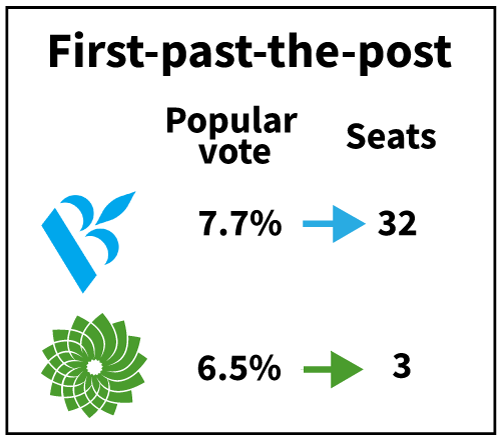
Wrong winner elections and no opposition
These kind of extreme results with first past the post are not uncommon.
Provincially, in 1987, 60% of New Brunswick voters voted Liberal. However, the provincial Liberals won every single seat – all 58/58 seats. There was no other party in the New Brunswick legislature, and no opposition. There was nobody to even ask questions of the governing party on behalf of the 40% of voters who hadn’t voted for them.
Sometimes first past the post even produces a “wrong winner” election – when one party receives more popular support, but another party gets to govern with a majority.
As just one example, a wrong winner election happened in BC in 1996, when the BC Liberals received more votes than the BC NDP, but the BC NDP won a majority government. It’s hard to say this outcome is what voters wanted.
Other serious problems with first past the post
Swing Ridings: Swing ridings are ridings where the number of votes separating the winner from one or more of their competitors was small. In other words, close races.
In a winner-take-all voting system like first past the post, a handful of voters in a few of these “swing ridings” can decide the results of an election. That’s why politicians and parties focus most of their time and efforts on those ridings.
Safe Seats: Many seats are “safe seats” where the same party could run a lamppost and win. This means parties can mostly ignore voters in those ridings.
Strategic Voting: Many voters feel compelled to vote “strategically” for the “lesser evil” rather than their sincere preferences.
Policy Lurch: When governments flip back and forth from one 39% “majority” to another, policies can shift drastically. Often, one party cancels and reverses the work of the previous party.
Adversarial Politics: Elections are a winner-take-all contest in each riding. The goal is a “majority” government where a single party in power doesn’t need to listen to anyone else. This means that elections can be nasty and cooperation between parties in Parliament is the exception rather than the norm.
